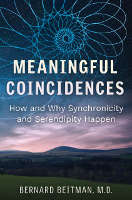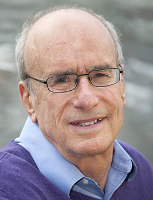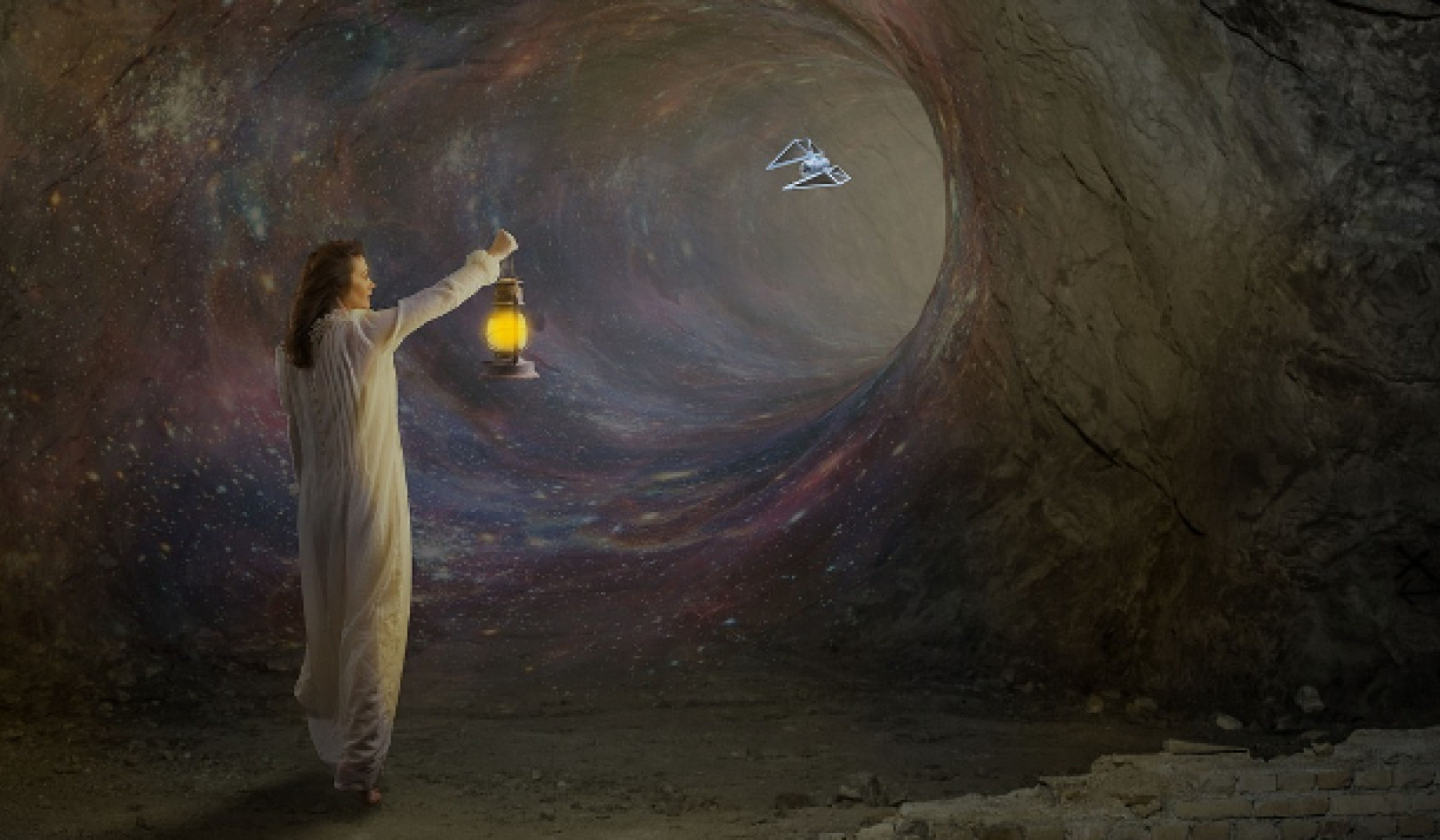
Image by Paul Stachowiak
The statement?“There are no coincidences”?reveals a paradox at the core of the subject of coincidences. Embedded in the definition of a coincidence—as two or more events coming together in a surprising, unexpected way without an obvious causal explanation—is a suggestion that there might be an explanation. But the possibility of an explanation creates the opportunity for saying “there are no coincidences.” Because if a cause can be defined, then it’s not a coincidence. Or “it’s too much of a coincidence to be a coincidence.”
If, as some people believe, God is the cause behind a coincidence, it’s no longer a coincidence. When God is called in to explain coincidences, you are the recipient of divine grace. If you think you had something to do with it, you are deluding yourself. “Coincidences are God’s way of remaining anonymous,” they say. Or, “It was meant to be.”
Randomness or Coincidence?
Experiences involving human GPS and other forms of psychic ability appear to be coincidences. But because psi is not recognized by mainstream science, psi events, which clearly do happen, are regarded as just a coincidence. But once conventional science recognizes psi as real, these events will no longer be regarded as coincidences. Except, that is, for the vexing problem of explaining psi events. Labeling them as psi events is a start.
So what remains after all possible explanations for a coincidence are exhausted? Randomness. But in this case, even the word coincidence would no longer apply, as they would just be random events, not coincidences.
Since coincidence research is, in part, an attempt to understand the underlying causes of coincidences, once they are understood, they are no longer coincidences!
Even as God, statistics, psychic abilities, and other means of personal agency are considered as explanation for coincidences, some remain unexplained—without a cause. It is in this residue of cases that some researchers seek an understanding of the nature of reality. Serial coincidences, for example, many of which appear to have no personal meaning, suggest to some that there is an underlying pattern to reality that is being hinted at.
Creating Coincidences?
Paul Kammerer, a Viennese biologist, attempted to systematize his observations of these series and to develop explanations for how they occur within the limits of current scientific knowledge. He proposed that information could not be destroyed. The longer a system stays together, every part within and surrounding it gains the stamp of the system. When the system does break apart, the broken pieces carry with them the marks of the original system.
One way to create coincidences comes from their constant motion; the parts can run into each other. Using the idea that like attracts like, similar parts of the same system come together to create a coincidence series. Kammerer believed that our environment holds limitless amounts of information that is in constant motion and mostly outside of our ability to perceive it.Jung discounted this theory but was able to use Kammerer’s suggestion of a yet-to-be defined cause as support for his acausal synchronicity principle.
Quantum-Based Synchronicity?
Psychologist Gary Schwartz offered a comprehensive list of explanations for long strings of coincidences extending from probability to One Mind, the idea that our individual minds are part of a greater consciousness, in his book, Super Synchronicity. He then concluded with a “Quantum based synchronicity” theory that is built upon the supposition that the waves of quantum particles are “real as steel,” which was suggested to him by Victor Stenger’s work Quantum Gods: Creation, Chaos, and the Search for Cosmic Consciousness.
In his book, Stenger addressed the well-known wave-particle duality that suggests that quantum particles can exist either in the form of a wave or a particle. Rather than being an alternate state from particles, he asserted that the waves of the particle-wave duality are descriptions of the behavior of the particles. The waves carry form, pattern, and ultimately meaning. Building on this, Schwartz proposed that long strings of coincidences are like quantum particles and form a wave with meaning.
I question how a string of ducks can be compared to a series of particles. Their size differences are immense and questions remain about how far quantum theory reaches into the objects of daily life. What then are the implicit meanings of the “waves” created by long strings of coincidences? What do their shapes and motion tell us about the nature of reality? Schwartz has more theory to develop.
Morphic Resonance?
Biologist Rupert Sheldrake suggests that self-organizing entities follow patterns laid down by other entities like them. (Self-organizing entities organize themselves without external guidance. Machines require humans to organize them.) He proposes that nature stores patterns of collective experiences that help guide similar entities in the present. He calls these habits of nature morphic resonance—which are shapes that resonate with the patterns of creatures like them.
“Morphic resonance,” wrote Sheldrake, “is the influence of previous structures of activity on subsequent similar structures of activity organized by morphic fields. It enables memories to pass across both space and time from the past. The greater the similarity, the greater the influence of morphic resonance. What this means is that all self-organizing systems, such as molecules, crystals, cells, plants, animals, and animal societies, have a collective memory on which each individual draws and to which it contributes. In its most general sense this hypothesis implies that the so-called laws of nature are more like habits.”
This image of resonating pattern repetition sounds like fractals resonating with each other. Collections of similar, recurring mor-phic resonances create morphic fields. Knowledge of these fields may parallel the changes in knowledge of magnetic fields that, when they were first observed, no one could explain. Now science has a better understanding of how magnetic fields operate. Morphic fields remain theoretical, waiting for further experimental testing to figure out how they work. Morphic resonance attempts to explain phenomena that mainstream science cannot.
Science, Machines, and Living Things?
Science is great with machines. Not so good with living things.
Again, a crucial difference between machines and living things is that living things organize themselves. A machine needs a self-organizing being to tell it what to do. Animals and plants use their own DNA and something else to organize themselves. That something else could be the morphic fields generated by morphic resonance.
Sheldrake uses morphic fields as a way to explain telepathy. He studied telepathy in real life, not in the laboratory. His research shows that people who are bonded are much more likely to be telepathic with each other. Because they have so many patterns in common, they share a morphic field that provides a theoretical medium for the transmission of thought.
Families, sports teams, and jazz musicians share strong morphic fields through which telepathic information can be transmitted. The fields may take years to create. They exist among any group of people who have been doing things together. The group members remain bonded to varying degrees even after they have separated.
Thought Can Influence Reality?
The morphic field hypothesis gives support to those who believe that thought can influence reality—particularly when charged by need and intention. The need drives the intention into morphic fields, finding and creating similar patterns.
The pattern of the intention resonates with its pairing in a morphic field, producing an analogue of the intended pattern. In this way, Sheldrake believes that prayer for others can help heal them, and that needed objects, ideas, and people can appear.
All theories aside, coincidences exist, or at least they appear to exist. Saying that there are no coincidences stops inquiry. Challenging the statement forces us to make sense of its ambiguity and explore our potential involvement.
You can choose the random perspective and, with a wave of a mental hand, dismiss most coincidences as not worth further attention. Or, you can seek out their possible personal implications and make life into an adventure of discovery.
Copyright 2022. All Rights Reserved.
Printed with permission of Park Street Press,
an imprint of Inner Traditions Intl.
Article Source:
BOOK: Meaningful Coincidences
Meaningful Coincidences: How and Why Synchronicity and Serendipity Happen
by Bernard Beitman, M.D.
 Each of us has more to do with creating coincidences than we think. In this broad exploration of the potential of coincidences to expand our understanding of reality, psychiatrist Bernard Beitman, M.D., explores why and how coincidences, synchronicity, and serendipity happen and how to use these common occurrences to inspire psychological, interpersonal, and spiritual growth.
Each of us has more to do with creating coincidences than we think. In this broad exploration of the potential of coincidences to expand our understanding of reality, psychiatrist Bernard Beitman, M.D., explores why and how coincidences, synchronicity, and serendipity happen and how to use these common occurrences to inspire psychological, interpersonal, and spiritual growth.
Exploring the crucial role of personal agency--individual thought and action--in synchronicities and serendipities, Dr. Beitman shows that there’s much more behind these occurrences than “fate” or “randomness.”
For more info and/or to order this book, click here. Also available as a Kindle edition.
About the Author
 Bernard Beitman, M.D., aka Dr. Coincidence, is the first psychiatrist since Carl Jung to systematize the study of coincidences. A graduate of Yale Medical School, he did his psychiatric residency at Stanford University. He was the chair of psychiatry of the University of Missouri-Columbia medical school for 17 years,
Bernard Beitman, M.D., aka Dr. Coincidence, is the first psychiatrist since Carl Jung to systematize the study of coincidences. A graduate of Yale Medical School, he did his psychiatric residency at Stanford University. He was the chair of psychiatry of the University of Missouri-Columbia medical school for 17 years,
He writes a blog for Psychology Today on coincidence and is the coauthor of the award-winning book Learning Psychotherapy. The founder of The Coincidence Project, he lives in Charlottesville, Virginia.
Visit his website at: https://coincider.com/

























